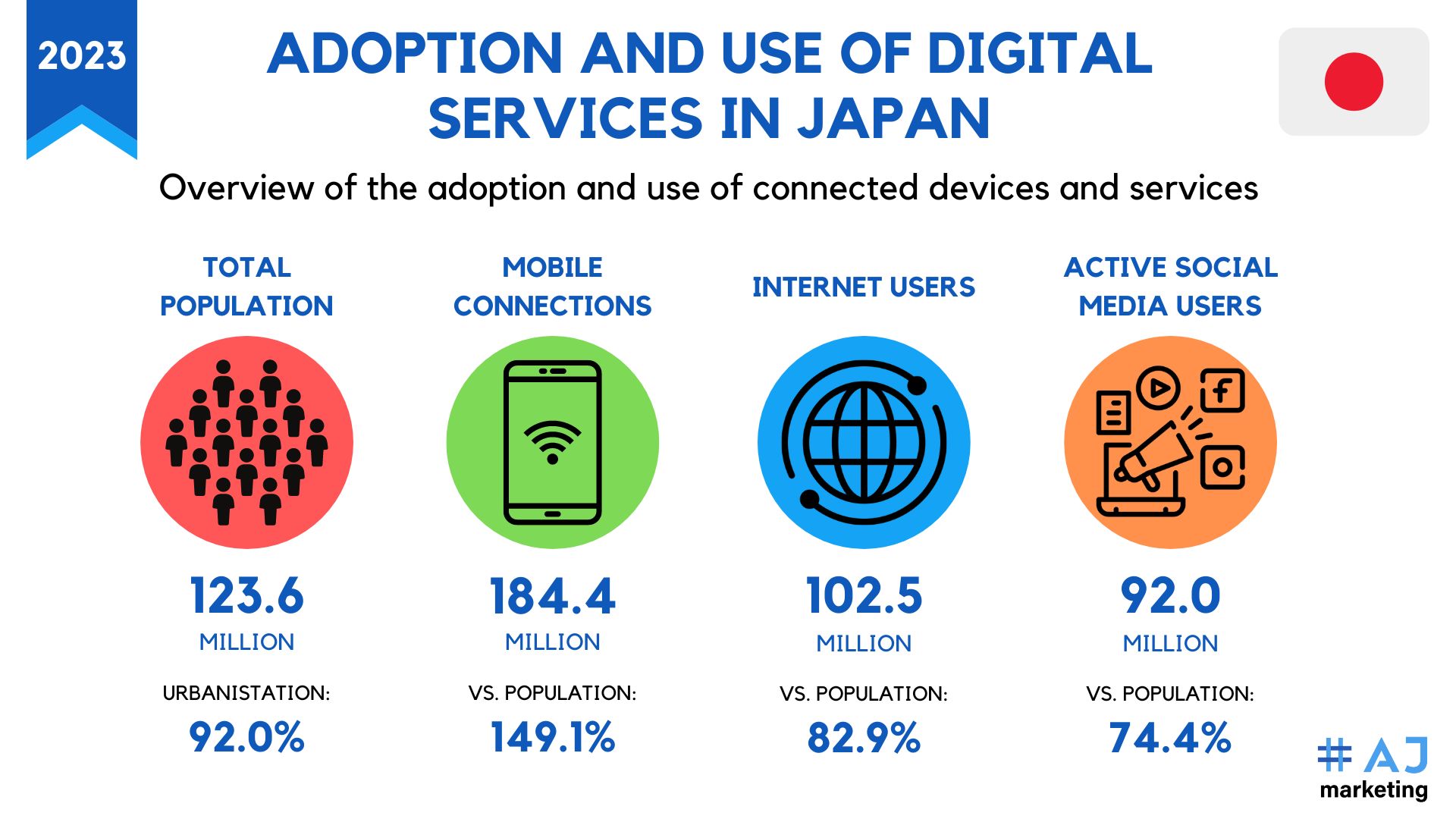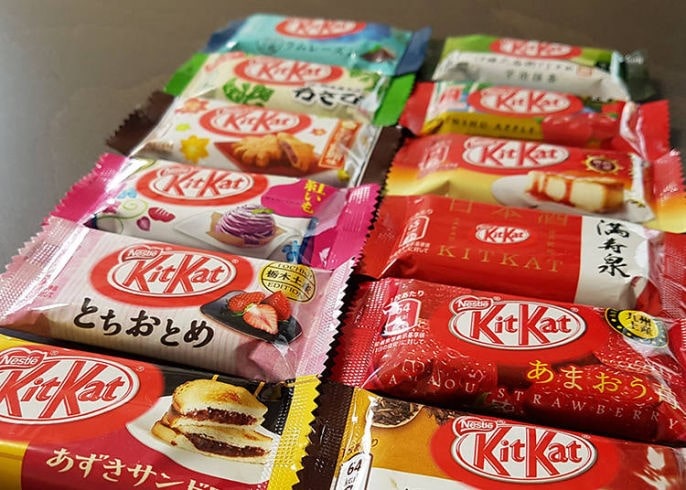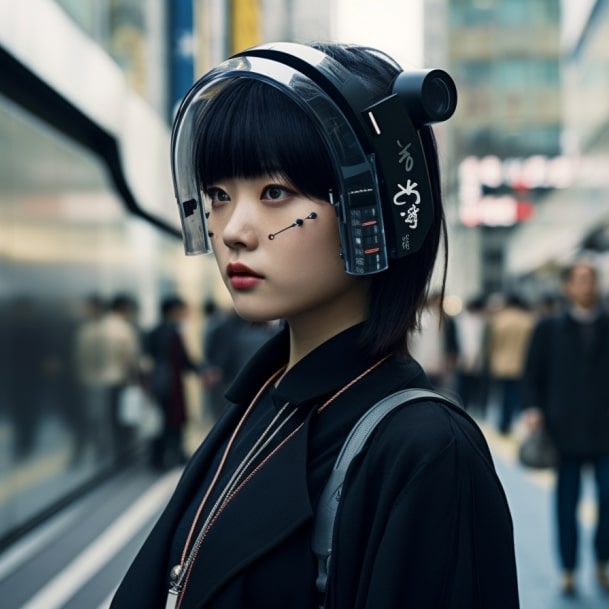Feb 22 (newsonjapan.com) - Marketing and advertising in Japan can be quite challenging, but it's also incredibly rewarding.
The Japanese customers are known for their meticulous nature, making it crucial to understand their preferences and expectations when promoting your brand. It's not just about having a recognizable brand name; factors like quality, reputation, and value hold immense importance. Considering that Japan boasts the title of one of the world's largest economies, competition is fierce, and new businesses entering the market must be well-versed in the characteristics of Japanese consumers.
Japan is a hotbed of technological advancements, constantly pushing the boundaries of innovation. The country's digital landscape is thriving, with a significant portion of its 123.6 million people being avid internet and social media users. In fact, a staggering 82.9% of the population are active on the internet, while 74.4% actively engage in social media. As a business owner, these statistics clearly indicate that the key to promoting your business successfully lies in embracing the digital realm.

However, it takes more than just data to conquer the Japanese market. Understanding what makes Japanese customers tick is crucial. What do they truly desire? What defines their preferences? If these questions are on your mind, then congratulations! You're already one step closer to effectively promoting your brand in Japan.
Fortunately, we've gathered insights from industry experts who have answered some of the most crucial questions that business owners need to know. In this article, we've compiled the invaluable tips for marketing and advertising in Japan from our experience at AJ Marketing, an innovative marketing agency in Japan.
So let's dive in and discover the secrets to captivating the Japanese market!
7 Tips for Marketing in Japan
- Look Through The Magnifying Glass: research on every aspect of the Japanese’s way of life
- Shift, Transform, Adapt: shift your business according to Japan’s current digital transformation trends
- Maintain the Seller-Customer Experience: maintain a seller-customer relationship by exploring live selling
- Companionship Makes Everything Better: utilize Japan’s culture of group thinking and group consciousness
- Market and Advertise Like a Pro: avoid rookie mistakes new businesses make when entering the market
- Authenticity Wins the Prize: collaborate with authentic local influencers who already won Japan’s heart
- Find Yourself a Local Partner: having someone on-the-ground is key to succeeding in a foreign market
1. Look Through The Magnifying Glass
Research on every aspect of the Japanese’s way of life

The Japanese population holds onto its cherished values and traditions, which even the wave of globalization cannot erase. Their cultural fabric is woven with principles of interdependence, respect for elders, dignity, and formality. While it's essential to be aware of these aspects, they alone won't guarantee a successful marketing campaign. To truly make an impact, you must delve deeper and uncover what they truly seek in a brand and what keeps them loyal.
Take the bustling city of Tokyo, for instance. It has become a hub for renters in Japan, leading to a demand for space-saving and renter-friendly products. Furthermore, the Japanese have a keen appreciation for luxury, making it one of the largest luxury markets worldwide. Brand reputation holds significant weight in this market, with negative reviews swaying customer opinions. It may seem like a lot to absorb, but there's still more to discover about the Japanese market.
Localization and the use of the Japanese language hold immense value in this market. Japanese laws mandate in-language content, even for advertisements featuring foreign brands or companies. Let's explore the example of KitKat to illustrate this.

Originally launched in the United Kingdom, KitKat has now made a name for itself across the globe. Its triumph in Japan can be attributed, in large part, to the clever transliteration of its name. "KitKat" became "Kitto Katto" in Japanese, which sounds similar to the phrase "kitto katsu," meaning "never fail." By adapting their brand to the Japanese language, KitKat managed to capture the hearts of chocolate lovers in Japan. In addition to language localization, KitKat wisely incorporated flavors popular in the country, such as matcha green tea and red bean.
While the Japanese tend to prioritize local products over Western ones, they remain open to accepting new brands that align with their way of life. This example serves as a testament to the importance of closely examining every facet of their culture, behavior, and preferences. By peering through this magnifying glass, you'll uncover the key ingredients for a successful marketing strategy that resonates deeply with the Japanese market.
2. Shift, Transform, Adapt
Shift your business according to Japan’s current digital transformation trends

The COVID-19 pandemic has highlighted a significant challenge faced by Japanese businesses: the struggle to adapt to remote work setups. However, this obstacle has spurred a remarkable shift in their operations, as more and more businesses in Japan are embracing digital platforms. Numerous studies have emphasized the potential of digitalization to boost Japan's economy, given the country's advanced digital infrastructure, technological expertise, and highly skilled workforce. This recommendation holds true for both established companies and newcomers eager to tap into the Japanese market.
Understanding the digital behavior of the Japanese population is crucial. Japanese internet users are actively engaged in online activities such as purchasing products and services, ordering groceries, and comparing different offerings. It's astonishing to note that a staggering 96 million people in Japan utilize the internet for their shopping needs, contributing to an annual expenditure of approximately $181.2 billion on online consumer goods. These insights clearly indicate that taking your business digital can unlock a world of conversions and sales for your brand.
So, how can you effectively transition your business to the digital platform? Well, there are several key steps you can take. First, create a compelling business website that showcases your products and services. Next, leverage the power of established e-commerce sites and applications by listing your offerings there. Additionally, develop your own social media accounts to establish a strong online presence and engage with your target audience. Lastly, don't overlook the emerging trend of live selling, which presents a unique opportunity to connect with customers in real-time and boost sales.
By embracing these digital strategies, you'll position your business for success in the ever-evolving Japanese market, capturing the attention and loyalty of tech-savvy consumers while reaping the benefits of increased visibility and sales opportunities.
3. Maintain the Seller-Customer Experience
Maintain a seller-customer relationship by exploring live selling

Have you heard of "live commerce" or "live selling"? It's the latest trend taking Japan by storm. Essentially, it's all about promoting and selling products through captivating live streams, where the audience can actively engage with the seller through chat and comments. This innovative strategy has gained popularity due to its incredible convenience and its ability to maintain a strong customer-seller relationship.
Here's how it works: Picture an influencer or seller going live on their social media platform, showcasing a product to their eager viewers. They leave no stone unturned, giving a detailed tour of the item from every angle and even demonstrating how it can be used. To add a personal touch, they might share their own review and thoughts about the product. The exciting part comes when viewers can simply comment if they want to purchase the product, and a dedicated team will reach out to the interested buyers to gather their information.
What's driving the popularity of live selling in Japan? Well, it's the perfect solution for people who want to connect and interact with their favorite influencers, even from behind a screen. The beauty of live selling lies in its ability to replicate face-to-face communication and provide customers with the immersive retail experience they crave.
The incredible growth of influencers selling online is hard to ignore. In just two years, the number of influencers in this space has skyrocketed by over 50 times! Experts predict that the domestic live commerce market will hit a whopping 10 trillion yen by 2024. It's no surprise that live streams on popular social media platforms like Instagram and Facebook play a major role in introducing brands to the Japanese market and fueling the excitement of brand discovery.
So, if you're looking to captivate your audience, boost sales, and be part of this buzzing trend, live selling in Japan is definitely a strategy worth exploring.
4. Companionship Makes Everything Better
Utilize Japan’s culture of group thinking and group consciousness

The Japanese culture is deeply rooted in collectivism and group consciousness, which significantly influences consumer behavior and preferences. Understanding these values is crucial when targeting Japanese consumers and crafting effective marketing strategies.
Let's compare it to the United States, where an individualistic culture prevails. In such a society, people often make purchasing decisions based on standing out from the crowd. However, in Japan's collectivist culture, consumers seek out brands that align with societal norms and reinforce their position within the group.
Harnessing the power of group consciousness becomes essential when designing marketing and advertising campaigns. The "bandwagon technique" proves effective in this context by conveying the message that the product is widely used and supported by the masses. Phrases like "everyone knows" and "people are lining up" exemplify this technique.
It's important to note that utilizing group consciousness doesn't have to be taken too literally. Take, for instance, the SoftBank commercial featuring Justin Bieber. In the ad, Justin doesn't explicitly state, "people are lining up." Instead, he walks through different classrooms, engaging with high school students and inquiring if they are benefiting from the "Super Student" promotion offered by SoftBank.
This commercial cleverly conveys the message that every high school student in Japan is embracing the SoftBank promotion. Following the commercial's release, students across the country began giving each other thumbs-up gestures, imitating Justin Bieber's iconic move from the advertisement.
By tapping into the power of group consciousness in a creative and relatable way, marketers can make a lasting impact on the Japanese market.
5. Market and Advertise Like a Pro
Avoid rookie mistakes new businesses make when entering the market

Japan is a bustling hub of countless brands, making it crucial for any new business entering the market to stand out from the crowd and present itself as a professional and appealing option to consumers.
To exude professionalism and attract consumers effectively, it's essential to steer clear of common rookie mistakes that new brands in Japan often fall victim to. Firstly, be mindful of your word choices. Some brands make the mistake of using terms that may be familiar to them but unfamiliar to their target audience. Your catchphrase should be easily understood and memorable, resonating with consumers effortlessly.
Secondly, avoid overwhelming your advertisements with excessive information. While it's important to convey the essence of your product, cramming too much text or details into your marketing content can dilute the impact of your core message. Simplicity is key to capturing attention and leaving a lasting impression.
Lastly, don't underestimate the significance of digital literacy when devising your marketing strategy. This is particularly crucial in social media marketing, where many marketing teams lack expertise in leveraging influencers effectively. Insufficient digital literacy often results in ineffective and misaligned social media posts and content. To portray a professional and believable image, your marketing team must be well-versed in the current social media trends and dynamics in Japan.
According to our experience at AJ Marketing, showcasing your brand's digital literacy can be effectively achieved through influencer marketing. By partnering with influencers, your business demonstrates its up-to-date knowledge of trends and gains the trust of key opinion leaders. Now, the question arises: How do you choose the right influencers? This brings us to Tip #6, an essential consideration in your marketing journey.
6. Authenticity Wins the Prize
Collaborate with authentic local influencers who already won Japan’s heart

Influencer marketing is taking Japan by storm, thanks to its authentic nature and ability to forge meaningful connections with the audience. This strategy harnesses the power of word-of-mouth advertising, which has proven to be more effective than traditional forms of promotion. Moreover, brands are increasingly turning to influencer marketing as it offers a more cost-effective alternative to expensive TV ads, commercial production, or billboard placements.
The impact of social media influencers on brand research and discovery is undeniable in Japan. Over 33% of Japanese internet users actively follow celebrities and influencers. In fact, an online advertisement featuring an influencer on YouTube alone can potentially reach a staggering 81% of the total population in Japan. Both large and small businesses are catching on to this trend, riding the wave of influencer marketing at an impressive pace.
Let's take a look at a couple of examples that demonstrate the power of influencer marketing in Japan. iHerb, a health food brand from the United States, successfully launched its products in Japan through a collaboration with YouTube influencer Ellie Ames. Ellie created an engaging unboxing video for her 127K followers, garnering over 18,000 views on YouTube. The video specifically targeted health-conscious individuals and families, effectively promoting iHerb's offerings.
Another noteworthy example is the marketing campaign by Daito Kentaku Leasing, in partnership with Azuking Toki and Too Ryo. They created a video titled "Odotte-mita (I tried dancing)," which quickly amassed over 2.3 million views and received more than 51,000 likes. The video was not a straightforward promotional piece but rather a lighthearted dance video featuring their signboard and theme song. When both influencers shared the video on their Twitter accounts, it garnered over 3,000 retweets, effectively spreading awareness of the company's services to a wider audience.
These examples exemplify how influencer marketing can establish a sense of trust and credibility among Japanese customers. Since influencers have already built a strong bond with their followers, they can effectively communicate the benefits of using a product or service better than the brand itself.
Of course, it's important to note that choosing the right influencer is crucial. There are influencers specializing in various areas of expertise, such as anime, beauty, tech, fashion, and gaming. So, the question arises: "Which influencer best represents my brand's values?" To find the answer, seeking the assistance of a local marketing agency becomes indispensable. Their expertise can guide you in making informed decisions and identifying the ideal influencer to amplify your brand's message in Japan.
7. Find Yourself a Local Partner
Having someone on-the-ground is key to succeeding in a foreign market
Imagine trying to tackle tips 1 to 6 all on your own. It's definitely possible, but let's face it, it would consume an enormous amount of your precious time and resources. That's where partnering with a local marketing agency like AJ Marketing becomes your secret weapon to success. They make the entire process of marketing and advertising in Japan speedier, easier, and more efficient.
To truly thrive in digital marketing in Japan, you need more than just internet research. It's crucial to delve deep into the country's unique culture, economy, policies, and ever-changing trends. And that kind of in-depth research can't be accomplished solely through online resources. You need people who are on the ground, immersed in the market, and intimately familiar with its nuances. This is where AJ Marketing's expertise and insider knowledge become invaluable, especially for new businesses venturing into the Japanese market.
Not only does AJ Marketing possess extensive knowledge of the Japanese market, but we also specialize in influencer marketing. With a vast network of over 7,000 influencers across Asia, we have the power to connect your brand with the perfect influencer who will effortlessly resonate with your target audience. We at AJ Marketing understand the importance of aligning a brand's values, identity, and image with that of the influencer, ensuring a seamless and effective partnership.
So, why stress yourself out trying to navigate the complex world of Japanese marketing on your own? Let us AJ Marketing be your trusted partner, guiding you through the intricacies of the market, leveraging our vast network of influencers, and propelling your brand towards success in Japan.
Conclusion
Entering a country with one of the largest economies in the world would require strategy. To effectively penetrate Japan, you as a business owner need to do in-depth and on-the-ground research on Japanese culture, behavior, and perception. Aside from this, you’d have to ride with the developments of technology and digital transformation in the country. Lastly, you’d have to gain people’s trust by having your brand introduced by already-reputable influencers in Japan.
We hope that these 7 marketing tips gave you an idea on how to expand your business in Japan. These tips can serve as your guide in launching a successful marketing and advertising campaign in this country.















